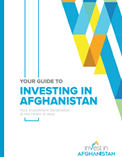 |
INVEST IN AFGHANISTAN
We at the Government of Islamic Republic of Afghanitan (GoIRA) welcome both national and international investors, to look at investment opportunities across different industries in Afghanistan. Afghanistan’s legal and regulatory framework has been modified and expanded to accommodate huge investments, creating a protected and favorable environment for investors. The laws and regulations of Afghanistan create an optimal environment for foreign direct investment. With flat corporate tax rate, 100% foreign ownership and no restriction on capital repatriation, minimum tariff to import raw material, Afghanistan is one of the most FDI friendly destinations in the region.
Published by the Office of the Senior Economic Advisor in Oct 2016
Browse the Opportunity Document |
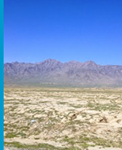 |
Land Allotment Process For Investors
Currently, three public entities are involved in the allotment process of land in Afghanistan including: (1) ARAZI, (2) Amlak Department of MoF, and (3) Kabul Municipality. ARAZI is in charge of all public lands (without a GoIRA owner) in Afghanistan. Currently ARAZI leases land for three purposes: (1) installing telecom, TV, & radio antenna, (2) agricultural purposes, and (3) for services, businesses, & development projects..
Published by the Office of the Senior Economic Advisor in July 2017
Browse the Opportunity Document
|
 |
Guarantee Schemes
There are a number of guarantee instruments including MIGA, OPIC, SIDA, and IFC that help accelerate growth in developing countries by mobilizing private financing for infrastructure development and other projects of national importance. By covering government performance risks that the market is not able to absorb or mitigate, these guarantees mobilize new sources of financing at reduced financing costs and extended maturities, thereby enabling commercial/private lenders to invest in projects in developingcountries.
Published by the Office of the Senior Economic Advisor in Oct 2016
Browse the Opportunity Document
|
 |
Afghanistan Cement Industry
The market opportunity of Afghanistan cement sector is around $698 million. Currently, 99% of the cement demand is imported from Pakistan. However, if we utilize our resources we can become self-sufficient in this sector.
Published by the Office of the Senior Economic Advisor in Jan 2017
Browse the Opportunity Document
|
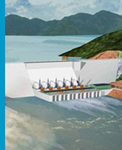 |
Afghanistan Hydropower Plants
The Afghanistan power system contains four different networks that are not fully interconnected. A completely integrated and developed national grid is expected by 2019-20. In addition, the country’s power system is comprised of 10 isolated grids or islands supplied through different power system by 220KV and 110KV.The current grid based electricity only covers 30-35 percent of the population. Moreover, lack of grid connectivity and inadequate supply have resulted in electricity inaccessibility in rural areas and power failures in major cities like Kabul. The current Afghanistan’s electricity consumption stands for 130KWH/year/person which is considered very low compared to south Asia average of 667KWH/year/person
Published by the Office of the Senior Economic Advisor in Jan 2017
Browse the Opportunity Document
|
 |
Afghanistan Copper Mines
Afghanistan is estimated to contain 60 million tons of copper, 2.2 billion tons of iron ore, 1.4 million tons of rare minerals such as lanthanum, cerium, neodymium, lodes of aluminum, gold, silver, zinc, mercury, and lithium. In 2010, the United States Geological Survey (USGS) valued Afghanistan’s mineral resources at $908 billion, while the Afghan government’s estimate is $3 trillion.
Published by the Office of the Senior Economic Advisor in May 2017
Browse the Opportunity Document
|
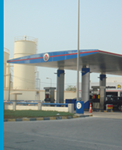 |
Afghanistan Oil and Gas
Afghanistan’s gas sector began its development in the 1960s with the first discoveries of natural gas. All existing gas reserves are located in a number of gas fields in the Amu Darya Basin including: (1) Khoja Gogerdaq, (2) Jarquduk, (3) Yatimtaq, and (4) Shakarak field. In addition, there are several non-producing gas fields such as Jangalikolon, Juma, Bashikurd and Khoja Bolan. Other associated gas fields, such as the Angot field which is located in the southern part of the Amu Darya basin, are very minor.
Published by the Office of the Senior Economic Advisor in May 2017
Browse the Opportunity Document
|
 |
Industrial Parks in Afghanistan
The purpose of this report is to discuss the industrial parks in Afghanistan. Industrial parks in Afghanistan are government managed sites that provide industrial land to the investors. We will cover the following points in this report: (1) The background of industrial parks in Afghanistan, (2) Demand and supply analysis of industrial land in Afghanistan (3) Existing industrial parks & infrastructure in Afghanistan, (4) construction process of new industrial parks, (5) Case studies of industrial parks development and management in UAE, India and Thailand, (6) Establishment of economic zone in Afghanistan, we will conclude this report with providing recommendations for efficient management of IPs in Afghanistan.
Published by the Office of the Senior Economic Advisor in May 2017
Browse the Opportunity Document
|
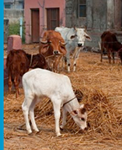 |
Afghanistan Dairy Industry
Afghanistan is an agricultural country where most of its economic output comes from agricultural products. Dairy is one of the most important agricultural products that include milk, milk products, wool, meat, skin and animal fat. Livestock is a good source of income and food for the farmers and their families in the country. Afghanistan was once self-sufficient of dairy and livestock. However, the country now hugely depends on foreign imports of dairy products including cream, yoghurt, milk, and soft-cheese.
Published by the Office of the Senior Economic Advisor in June 2017
Browse the Opportunity Document
|
 |
Afghanistan Poultry Industry
Afghanistan is an agricultural country, most of the people living in rural areas are engaged in poultry farming. Majority of the country’s citizens are involved in traditional poultry farming, especially women. But, as the demand for chicken and chicken egg is rising day-by-day, need for well-established companies to invest in this sector with the ability to meet high demand of quality poultry also increases.
Published by the Office of the Senior Economic Advisor in July 2017
Browse the Opportunity Document
|
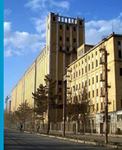 |
Silo Enterprises
Afghanistan has three state owned silo enterprises which are (1) Central Silo, (2) Pul-e-Khumri Silo, and (3) Balkh Silo. In the past, these three facilities had production capacity of up to 665 MTs of flour per day. However, nowadays these three facilities are not fully operational and most of their revenues are not coming from their basic operations. The machineries and bakeries at each silo have worn out and are completely out of date. Instead, silos generate their revenues by renting their properties and machineries to the private sector at AFN1,000 – 2,500 per sqm per month.
Published by the Office of the Senior Economic Advisor in July 2017
Browse the Opportunity Document
|
 |
Afghanistan Marble Industry
Afghanistan has over 400 varieties of marble with total value of around USD150-200 billion. According to Mitchell (2008) reports, the total estimated marble deposits in Afghanistan reach over 9 billion MTs. Afghanistan can supply marble to regional and international markets almost for indefinite period of time. Moreover the US geological survey has discovered 66 marble and granite reserves in Afghanistan, which are located in, Kabul, Parwan, Nangrahar, Wardak, Bamyan, Panjshir, Laghman, Herat, and Balkh provinces.
Published by the Office of the Senior Economic Advisor in August 2017
Browse the Opportunity Document |